In April 2023, we spent four weeks in the Sukhumvit area of Bangkok. Read about our first week here.
Chinatown
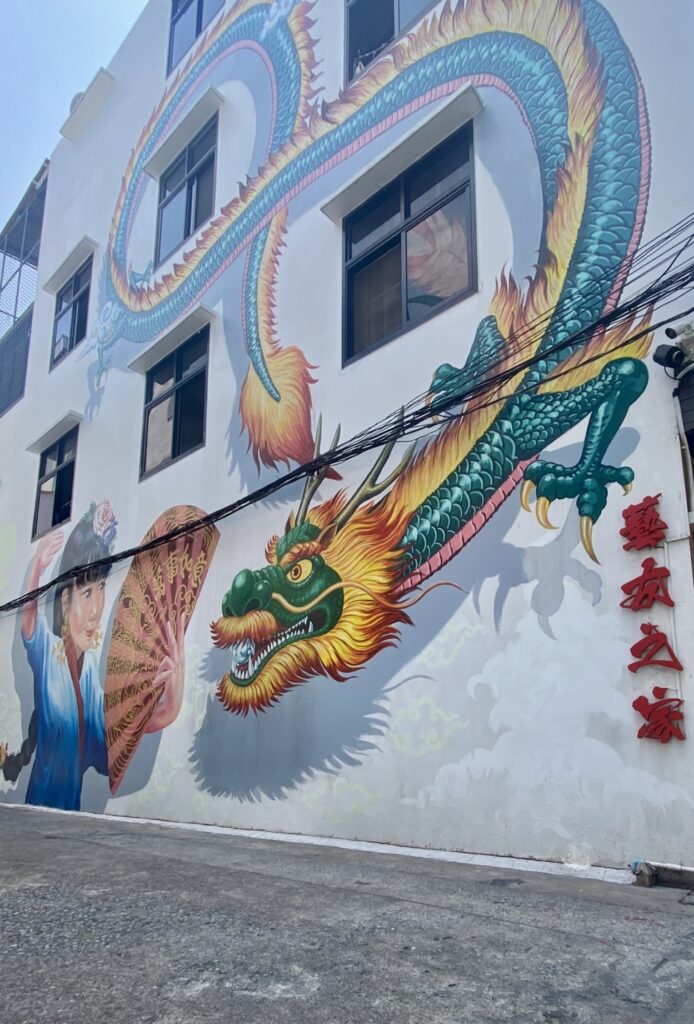
One of the highlights from our month in Bangkok was the Wat Traimit temple, where we saw the mammoth solid Golden Buddha, and toured the Chinatown Heritage Museum.
Again, we hopped on a local bus that took us into Chinatown. We stopped at a small sidewalk joint for Pad Thai before entering the temple. It was just okay but a good value for the money. (Less than $5 USD for our quick meal.)
After lunch we walked across the street and purchased tickets to the temple and museum, then walked toward a set of open doors. Since there were sets of shoes sitting outside, we removed ours and left them along with the others. (This is a common practice in Buddhist temples.)
When we walked inside we were confused – there were luncheon tables set up and employees scurrying around to clean up lunch.
We walked around the first floor, saw a small altar and not much else, so decided to go to the second. We took the stairs up and walked around an exterior corridor surrounding the building. There! We found the entrance to the museum. Looks like that open door downstairs was the employee entrance! We were a little sheepish about our mistake and decided to leave our shoes downstairs.
The museum was fantastic! It was thorough and multi-sensory. When you first walk in, the room simulates what it would feel like to migrate on a junk boat from China, with the doors opening into what Bangkok looked and sounded like at the time.
There was even a 3D model of Chinatown to see what the main drag used to look like.
The museum was large and filled with the history of how so many Chinese people ended up in Thailand, what parts of China they came from, and the culture they brought with them.
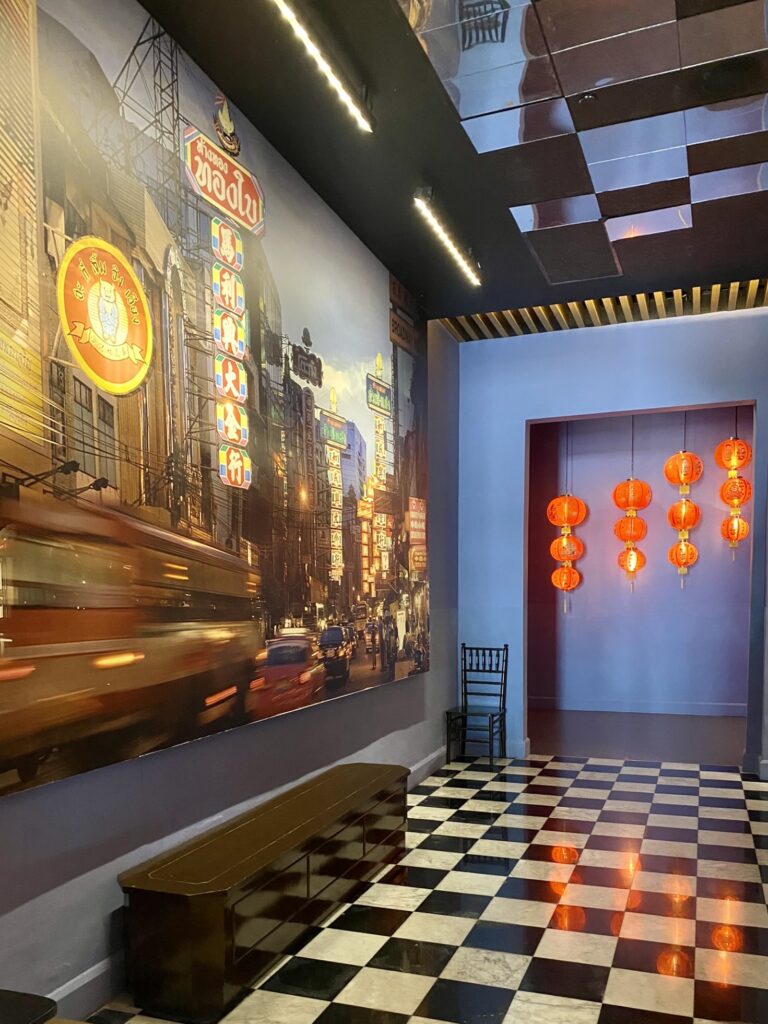
We knew from other Southeast Asian countries and their museums that waves of Chinese immigration were based on the historical conditions in China. But this museum showed parallel timelines of what was happening in both China and Thailand, to show the historical factors that led the migrants to leave them homeland and head for a new life. We also appreciated the context provided earlier by the Thai Labor Museum, which showed us how the Chinese immigrants fit into the labor context of the Thai agricultural system.
It was all great except for the fact that our shoes were outside and we were just walking around barefoot. I felt like an idiot as I saw others *in shoes* admiring the exhibits.
Once we finished with the museum portion it was time to ascend to the top floor to view the Golden Buddha. We took the steps up to the next floor. The marble flooring was warming greatly in the sun so we hot stepped to the temple entrance. (And this area, being a temple, was a shoes-off area.)
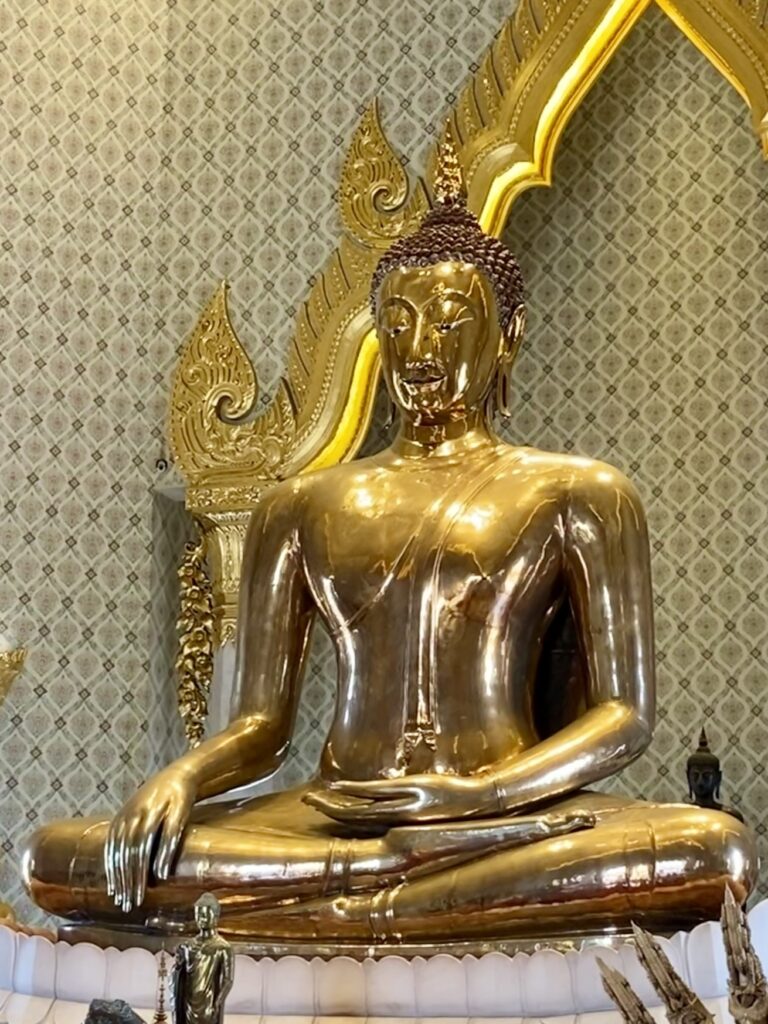
We admired the 10-foot-high statue and then walked to the museum floor dedicated to the statue itself.
The Golden Buddha has an interesting story. It is certainly hundreds of years old, but its early history is unknown. What we know is that from 1800 to 1955, it was transported from the ruins of ancient Ayutthaya to and from various locations in Bangkok. In 1955 it was again being transported. The rope rigging system was set, but the statue was heavier than expected, and it fell and was damaged.
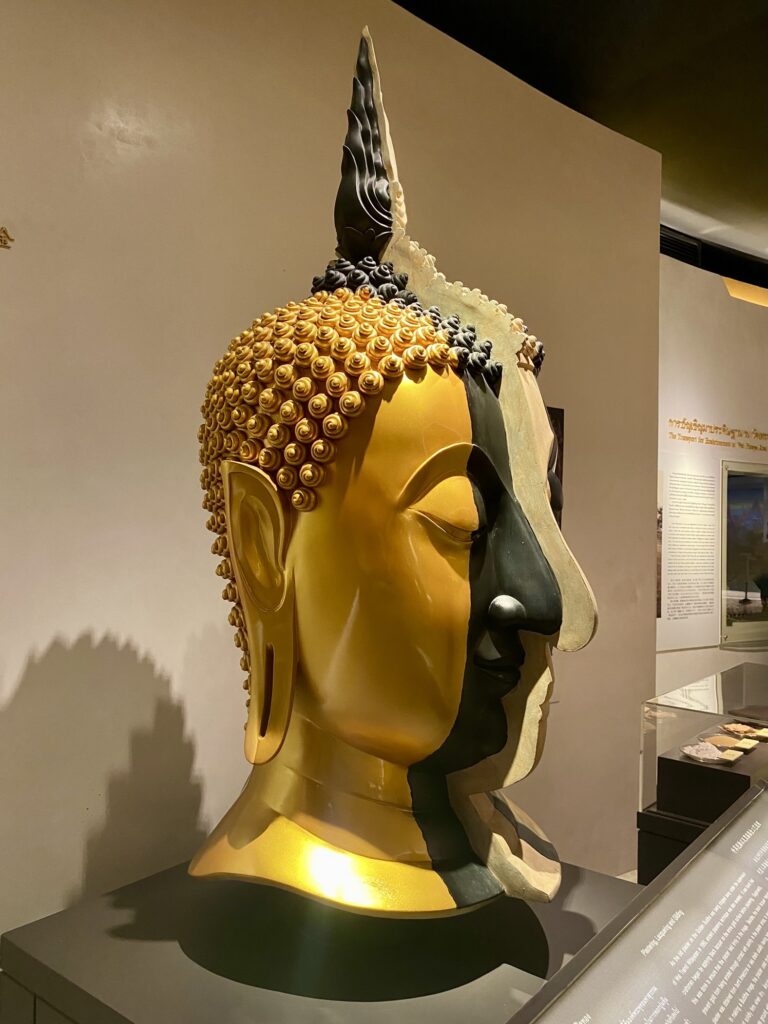
But this was a fortunate accident! You see, at some point the Golden Buddha was covered in a layer of plaster that was then gilded, so that it would look like a less-valuable statue (probably to hide it from invaders). And when the statue fell in 1995, the true statue was revealed: 11,000 pounds of solid gold! That’s why it was so heavy. At this point, the gold itself is worth more than $250,000,000 USD!
After we retrieved our shoes from the side door we walked into Chinatown to explore.
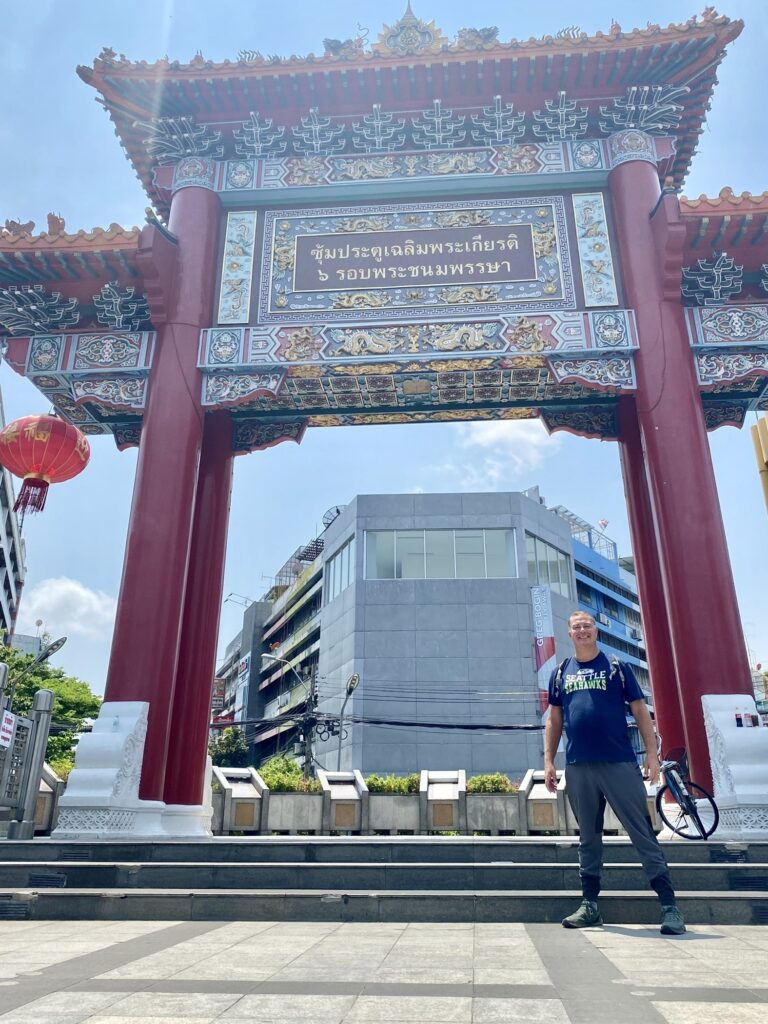
We meandered the streets in the afternoon while wiping beads of sweat from our brow. I didn’t know it was possible to sweat from the kneecaps. I felt like sweat was pouring out of my body – including my eyeballs!
At one point we stopped at a cafe by the river that was filled with beautiful antiques. The whole place gave off a Angkor Wat vibe with trees sprouting around the foundation of the building.
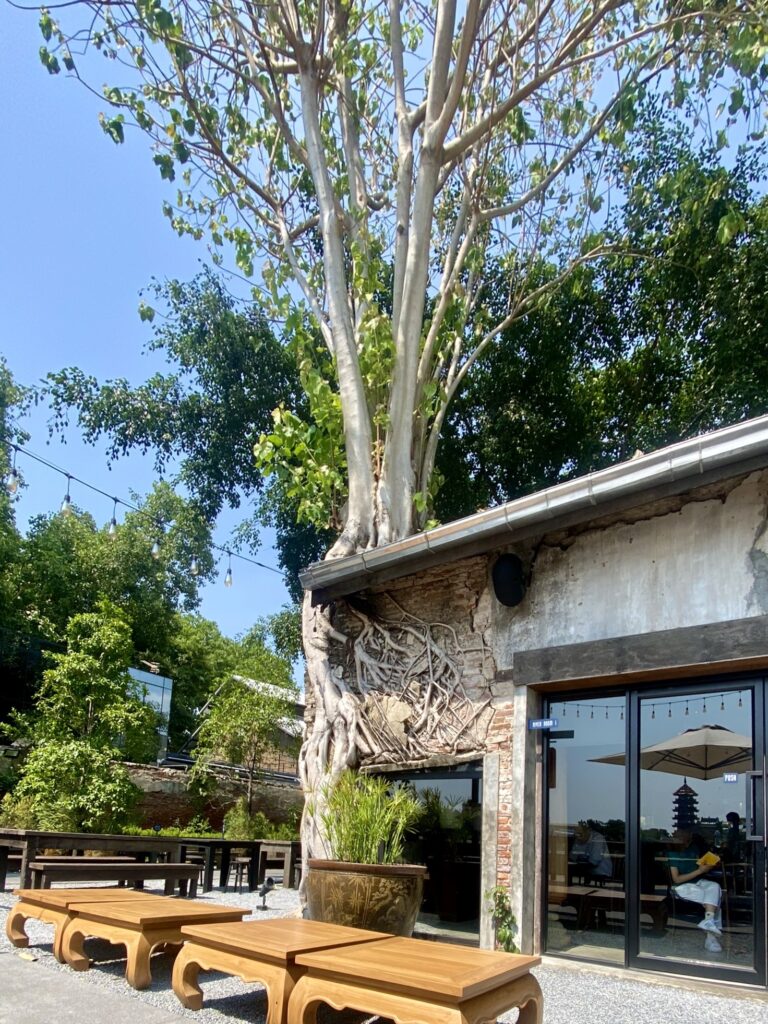
We followed the river north and weaved our way through the gigantic Sampeng Market. This is essentially a long alleyway with various market stalls on each side. Everything is sold there – from jewelry to fabrics to toys, and all types of foodstuffs. It is crowded and disorganized, but offers all types of goods, typically imported from China. We purchased a large squirt gun for future use at the Songkran water festival.
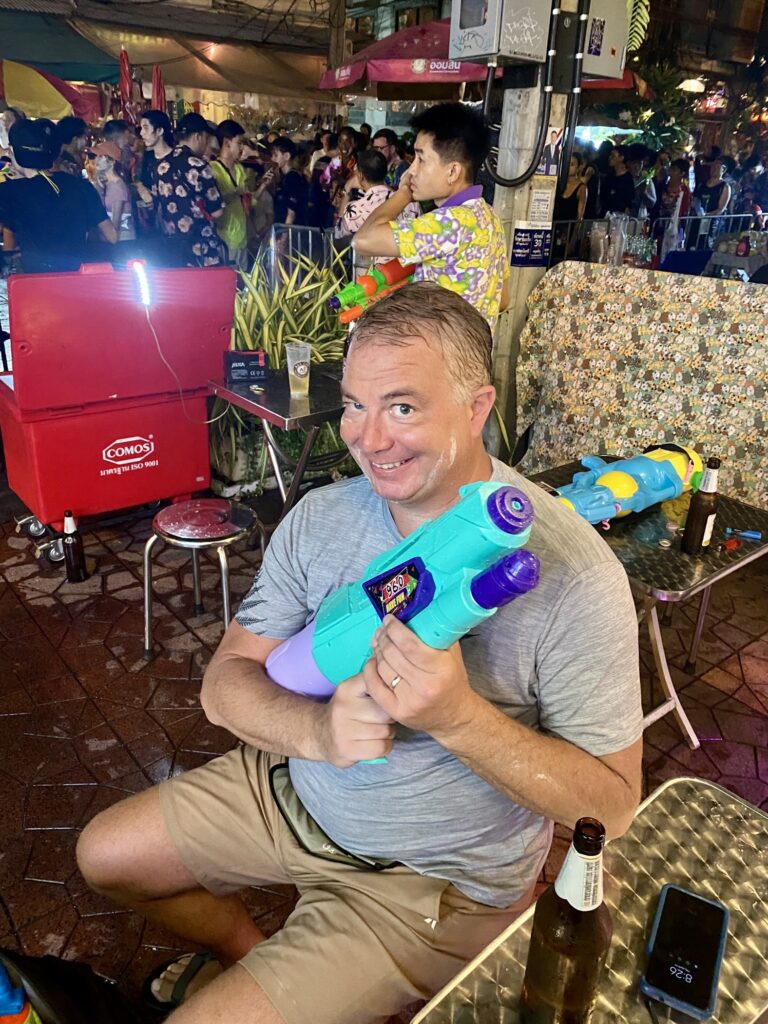
We eventually made it over to the “main drag,” Yaowarat Road, which felt quite similar to Chinatown in San Francisco. Lots of food vendors and tourists! It smelled great though and we were getting hungry by this point.
We navigated to the Ong Ang Walking Street, a scenic pedestrian street divided by a canal. We stopped by a small Thai stand for a tasty dinner of pad kaprow and a noodle dish.
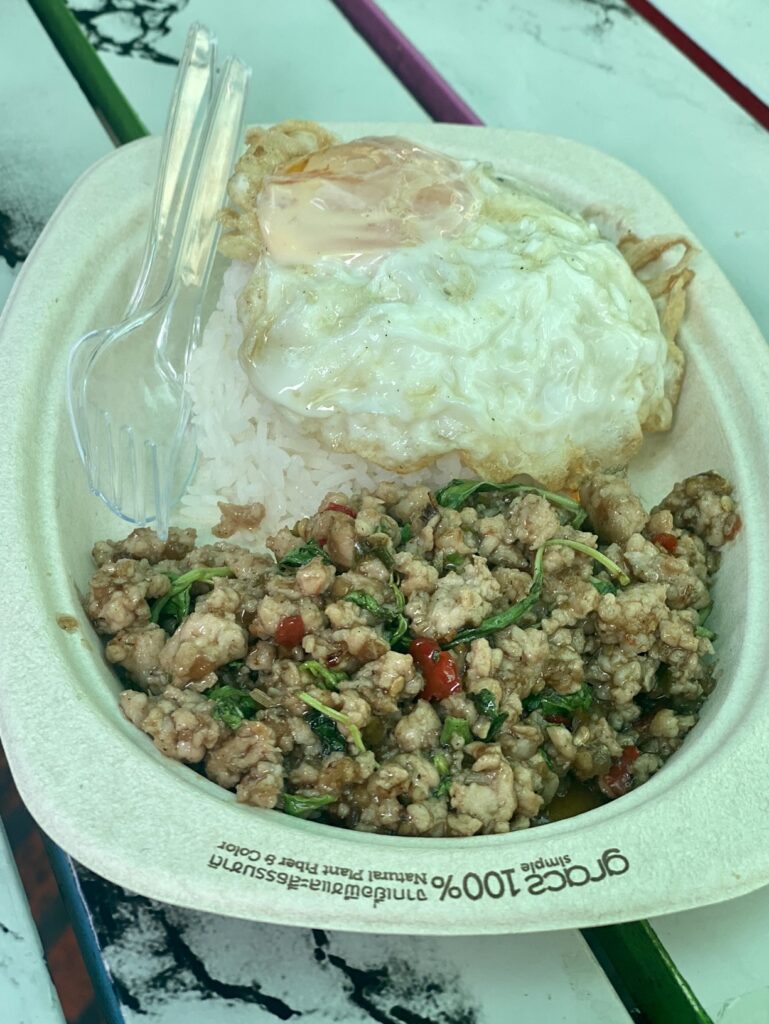
After eating, we used one of the footbridges to cross to the other side of the canal. It was filled with several Indian restaurants. They looked and smelled good but we were too full.
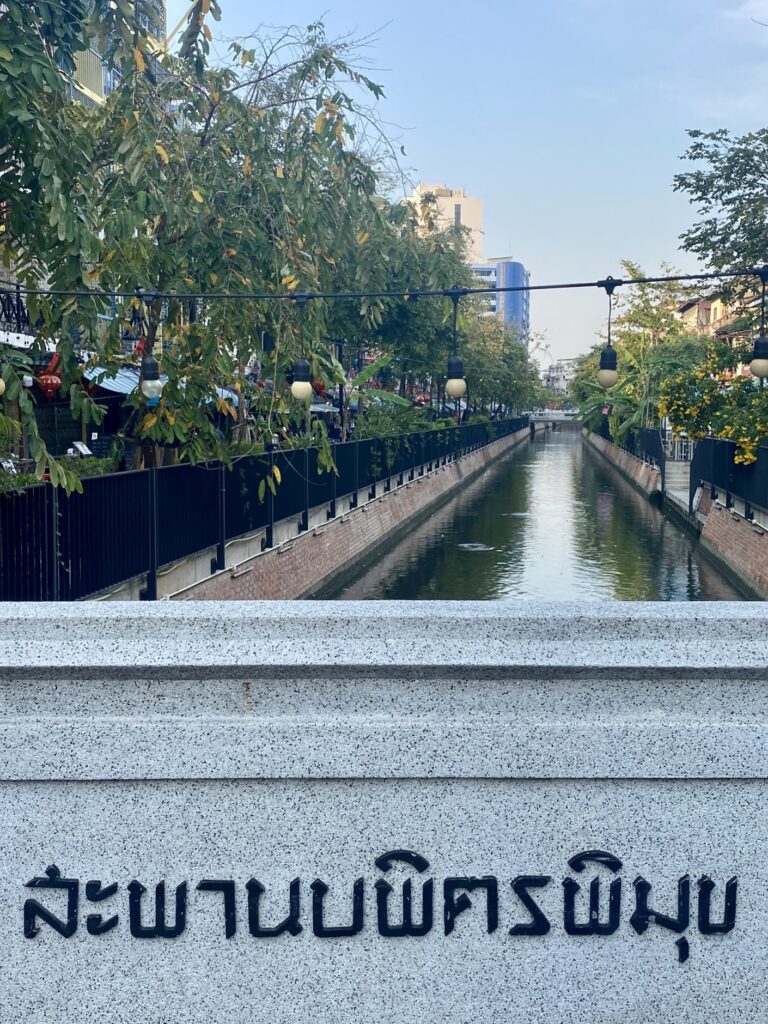
Grand Palace
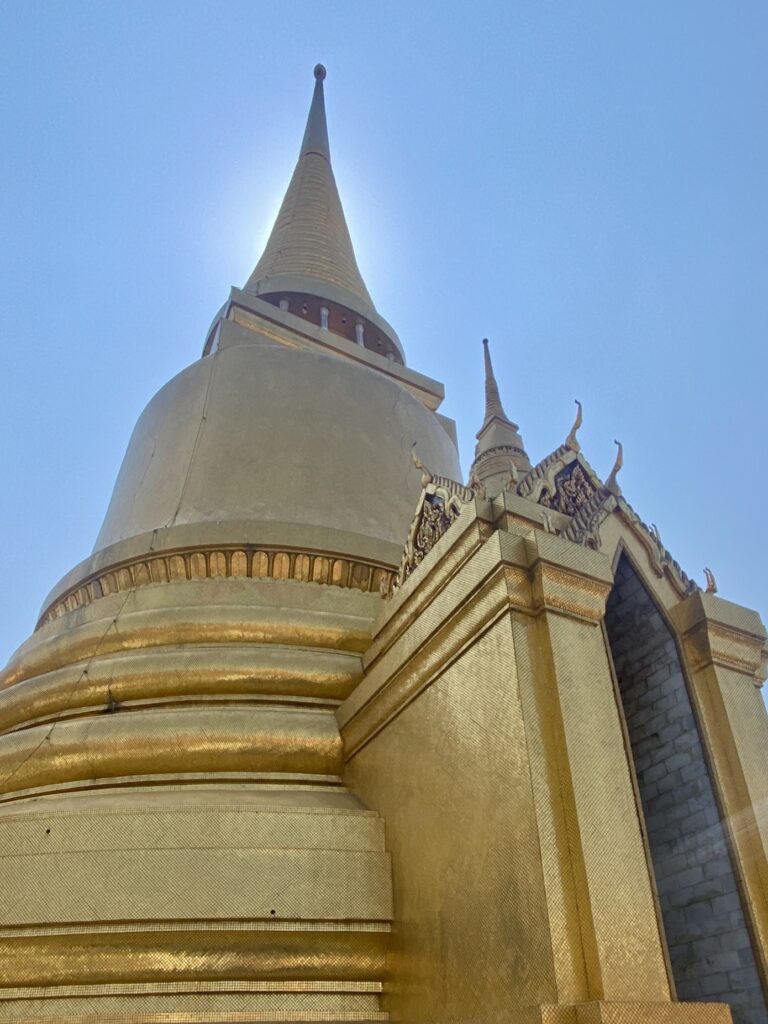
With the heat the way it was, we attempted to plan activities in the morning or after sunset. We got up early one morning to tour the Grand Palace before the temps hit triple digits.
We took the metro into old town and walked a few blocks toward the entrance. On a corner in the shade a few local Thais were standing around hoping to be selected as a guide. We approached a nice looking guy.
However, Corey and I misunderstood the pricing. This was a good communication lesson for us! Corey heard a price per person but I thought I heard that price for both of us. I thought it was a good deal so I didn’t haggle. Corey thought I was happy with the price so he didn’t haggle. It wasn’t until Corey paid our guide at the end that I discovered our mistake.
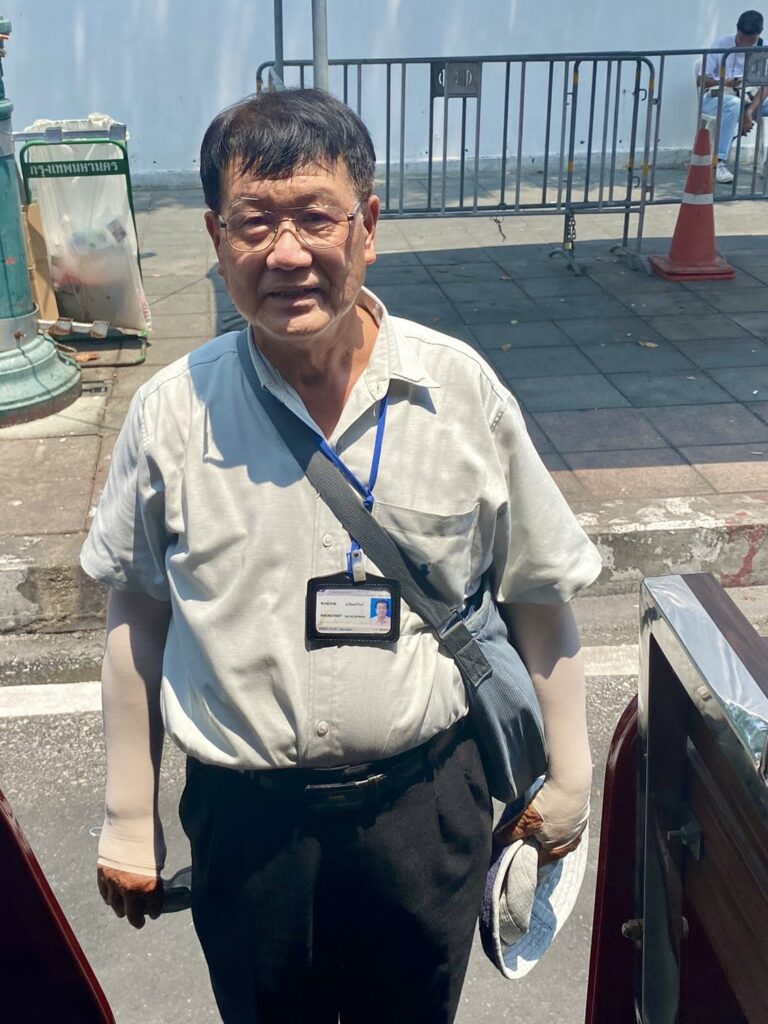
I had toured the Grand Palace with my sister back in 2007. We walked around on our own then, so this time I wanted a guide to tell us more about the temples and the grounds. Although we may have paid too much for the tour, the guide was nice and very knowledgeable, and kept putting us in good positions for photographs.
Overall we had a great morning touring the outer courts of the Grand Palace.
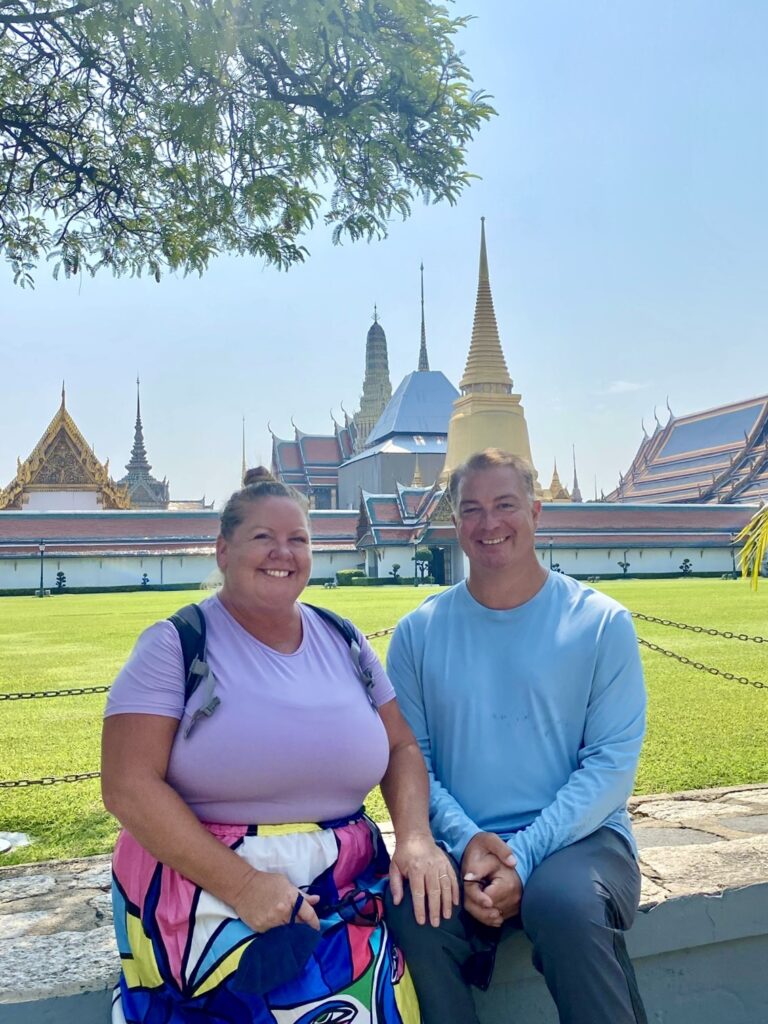
Here are the giants that guard the palace. Their story is part of the Ramakien, the Thai version of an Indian epic, which is told via murals in the temple of the Emerald Buddha.
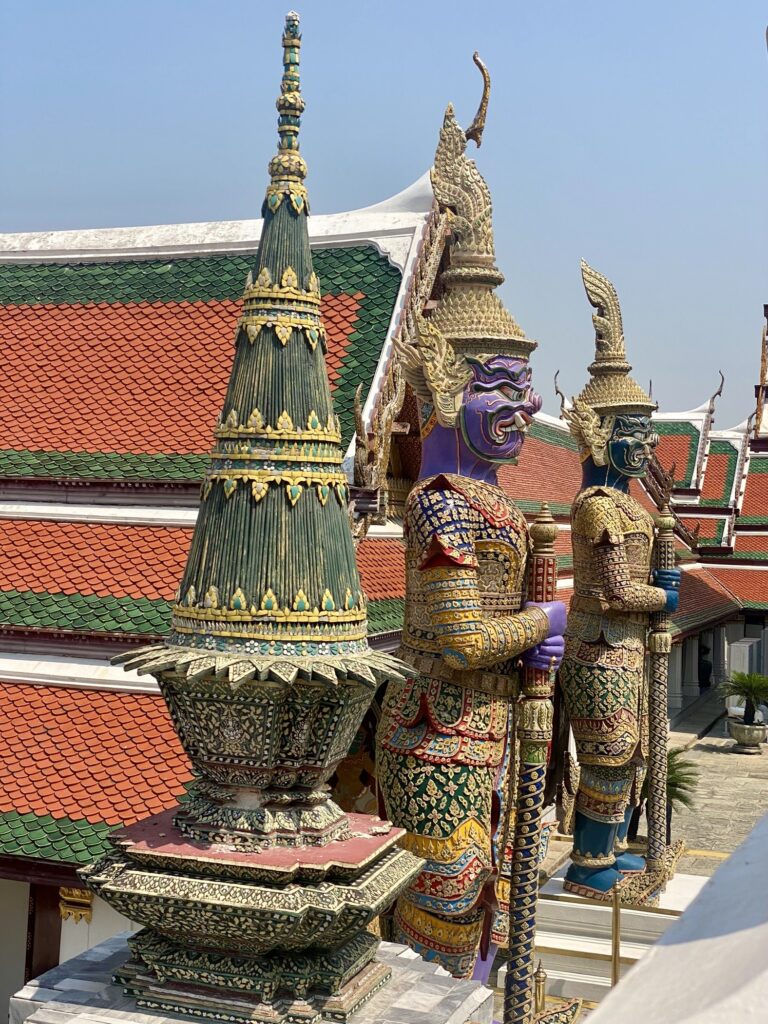
The palace complex contains various temples, courtyards, and palace administration and residential buildings. There is much to see!
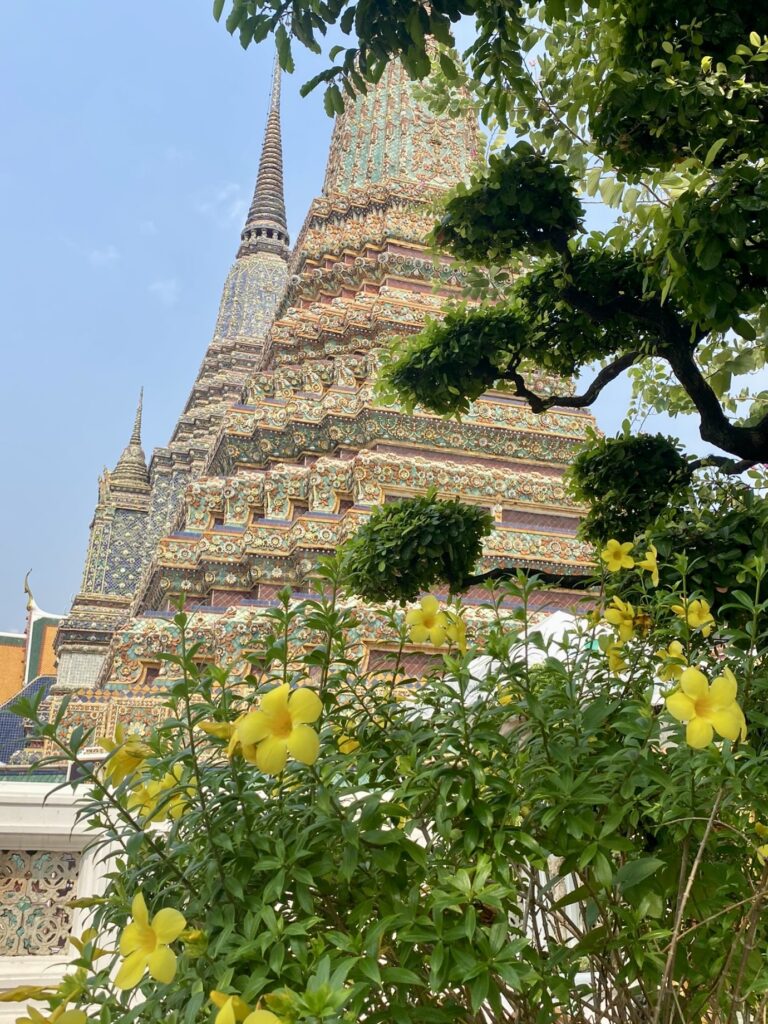
One of the temples contains the Emerald Buddha and it is quite a popular tourist sight! We learned that Buddha’s clothing changes for the three seasons in Thailand: hot, cold (less hot), and monsoon. The Emerald Buddha is small, just a couple feet tall!
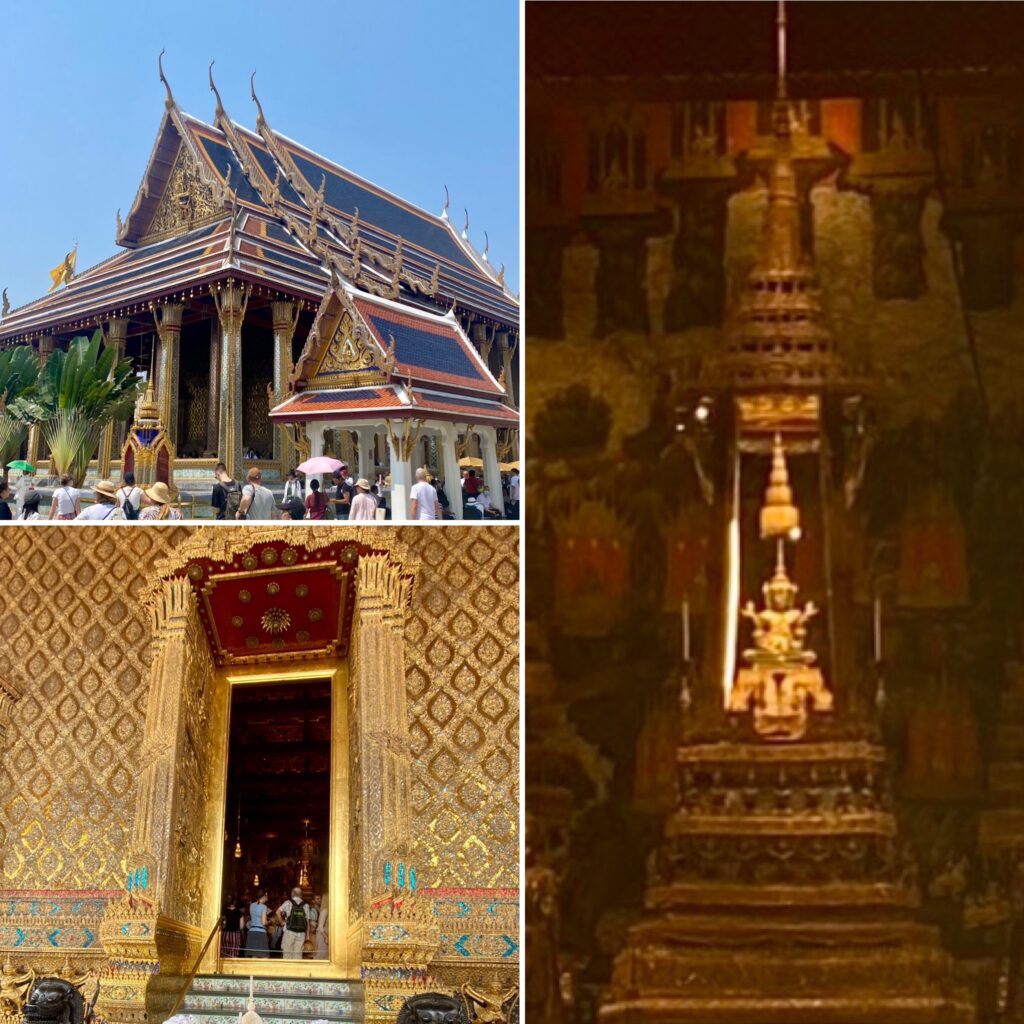
Here are some of my favorite photos from our tour.
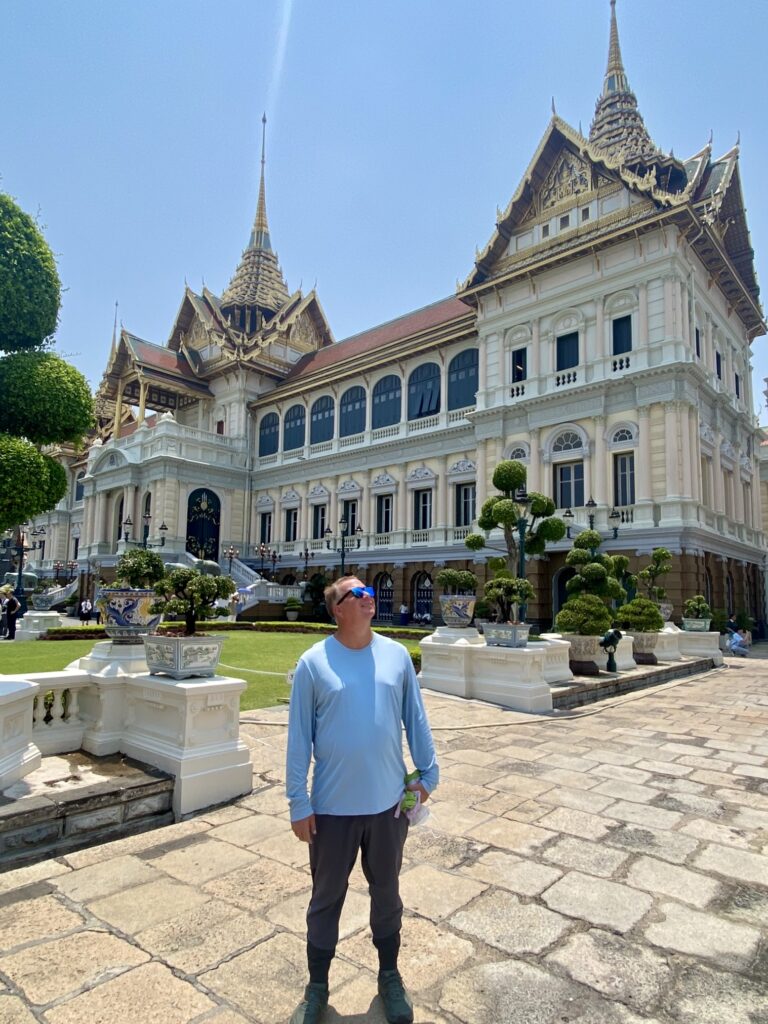
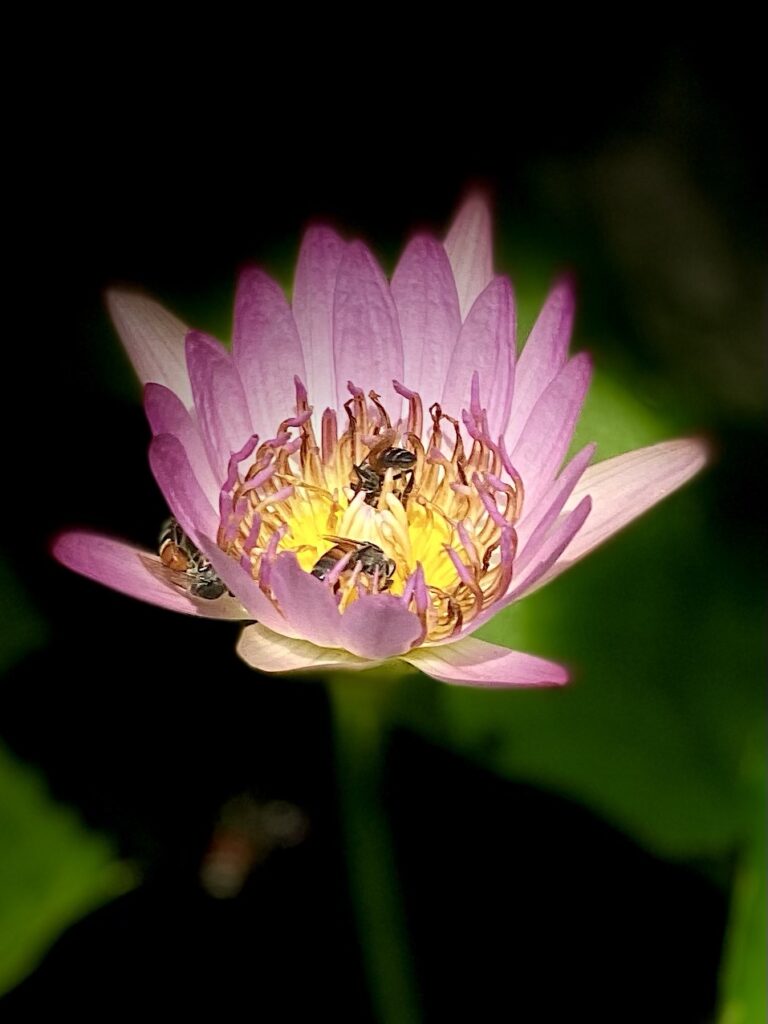
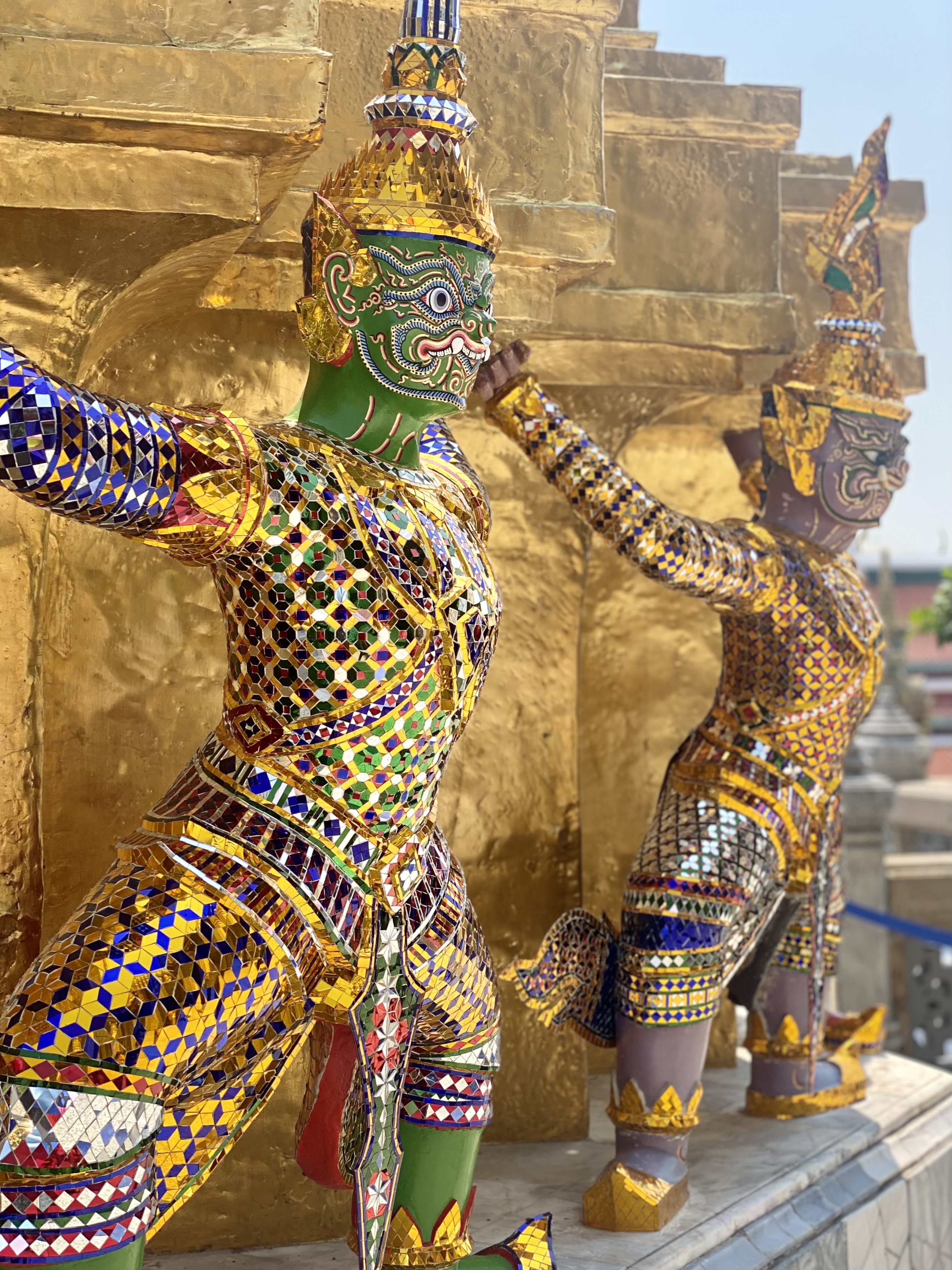
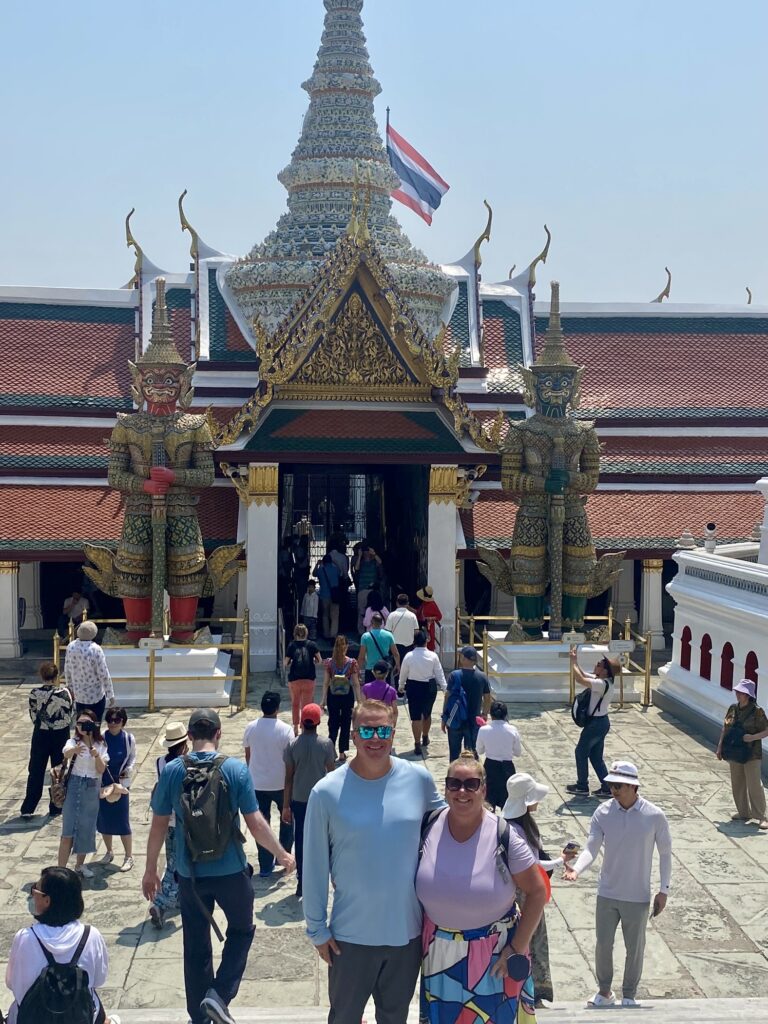
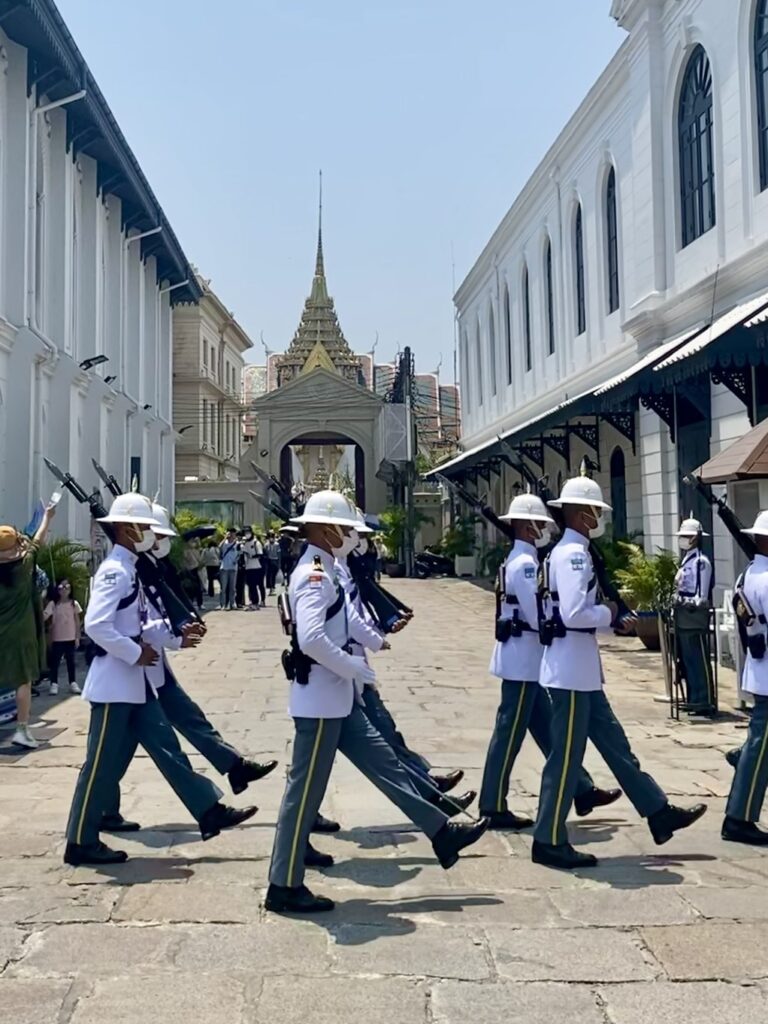
Khon: Thai Masked Dance Show
With the purchase of Grand Palace tickets, you also get tickets to watch a performance of traditional Thai dance. Highly recommend!
There is even a free shuttle to the historic Sala Chalermkrung Royal Theatre, built in the 1930’s. So no excuse to not experience the performance.

The performance itself was only about 45 minutes long. The costumes and dancing were superb! We learned how the styles have changed through the various Thai eras. Then there was the tale of Hanuman the monkey, taken again from the Ramakien epic. English subtitles are displayed above the stage, so while the theater has great sightlines, make sure to sit at a good angle to read the translations.
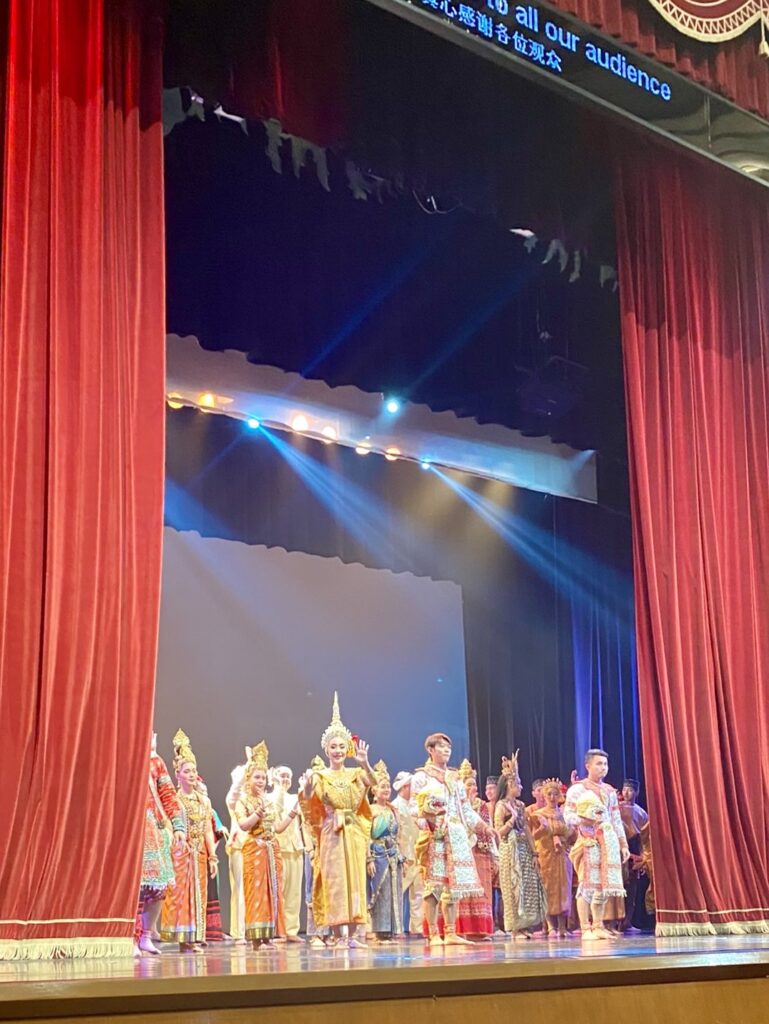
Lumpini Park
We love being outdoors and enjoy sauntering through botanical gardens and parks while abroad. We decided to check Lumpini out on our way home from the Grand Palace.
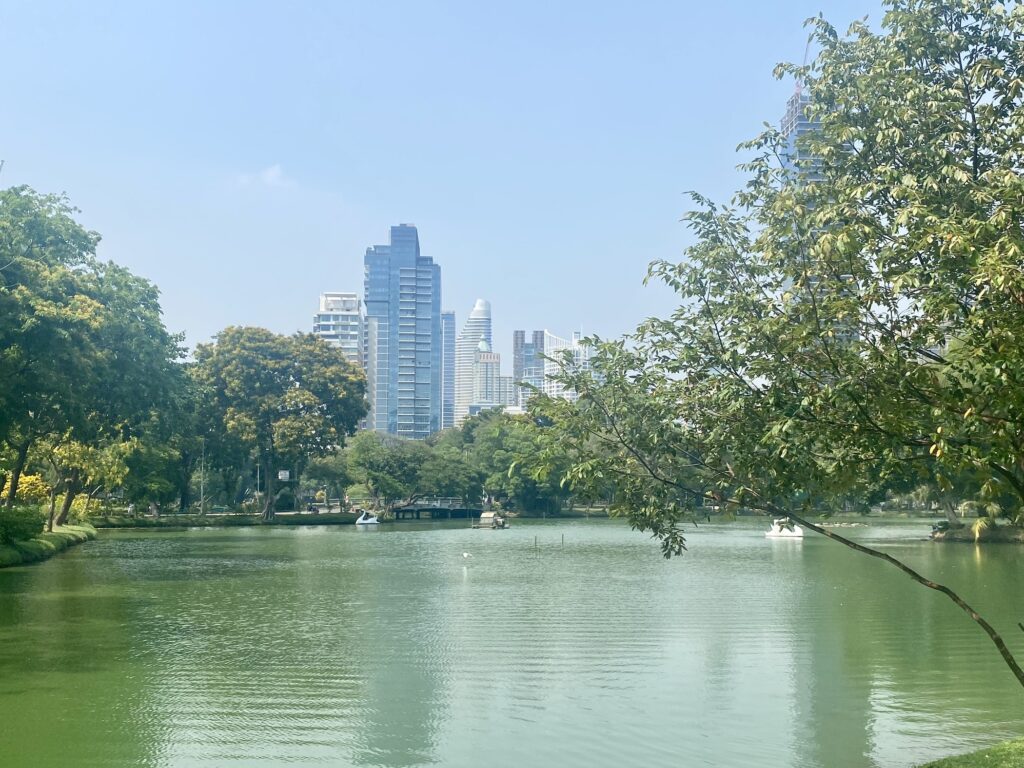
We were just whelmed by the design, size, and beauty. We were shocked by the giant monitor lizards though! We’ve encountered them all over Southeast Asia but the ones at Lumpini were brazen! There were several swimming in the moat along the border of the park but as we exited there was one just walking down the sidewalk.
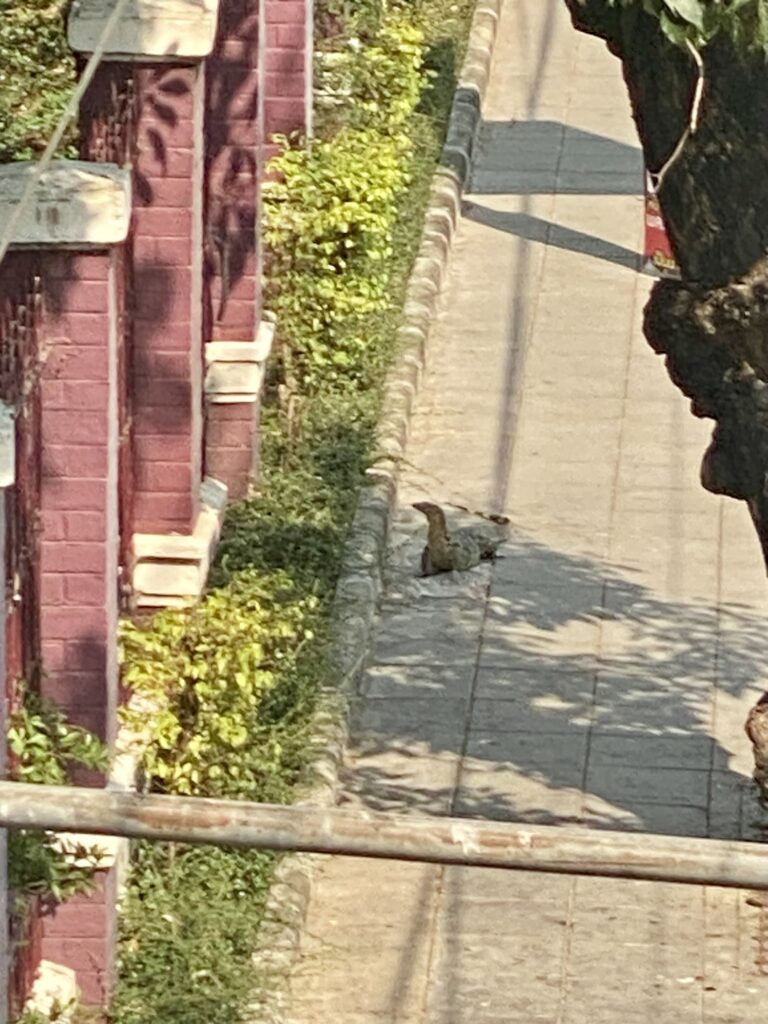
Chatuchak Weekend Market
Touring markets became a weekly ritual for us. Corey researched and came up with ideas on which to visit. Chatuchak is easy to get to using public transportation, and it is known for being the largest market in Bangkok. We went midday and immediately weaved our way toward the food section.
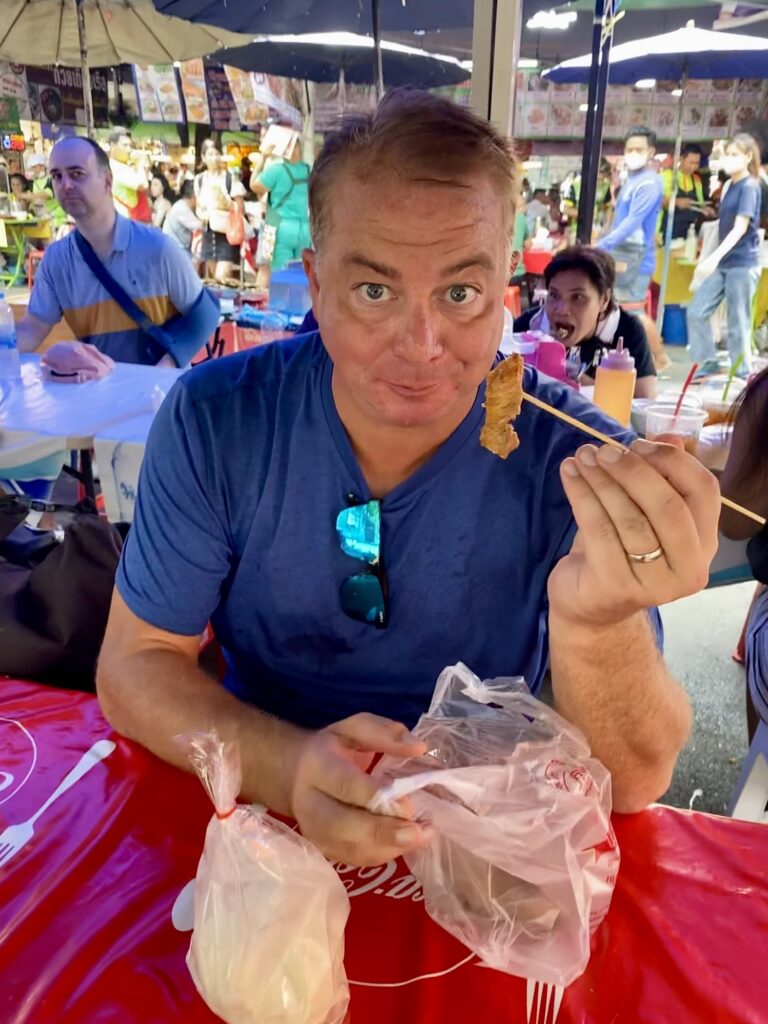
We found the food from vendors reasonable, but the section with sit down tables was expensive. You get what you pay for, and in this case it is a seat! We had a few nibbles as we meandered around, but with the sweltering heat, we eventually succumbed to sitting at a table. Every table is “owned” by a stand selling both food and drinks. Fortunately they seemed to be okay with supplementing with food from the stands, but we also overpaid a bit for the right to some shade and chairs.
Satiated and still sweaty we stepped back into the maze for shopping. There is everything imaginable at this market, and it is divided into various sections.
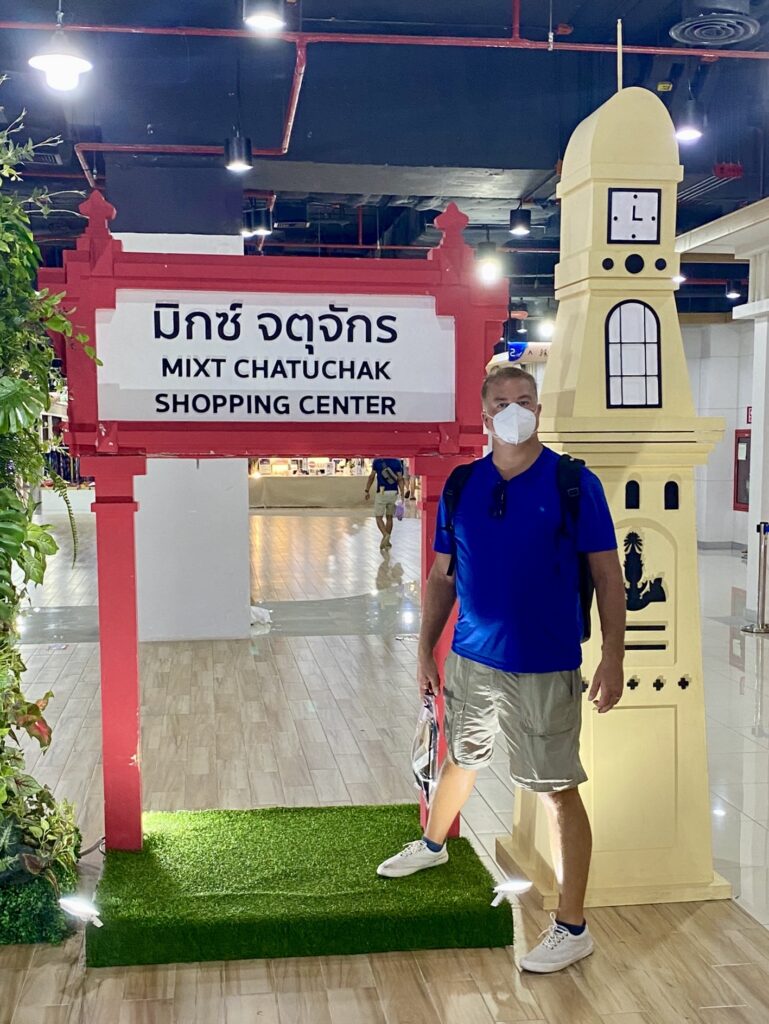
There are over 11,000 vendors! A portion of the market is permanent and open all week, but the main affair happens only on the weekend. The permanent section included an air-conditioned mall and an outdoor pet section. We walked past dozens of storefronts with adorable puppies and kittens and bunnies. It felt strange to see these since we don’t have them in the US anymore.
Overall this was an interesting experience, although overwhelming with the sheer quantity and variety of options.
Massage
Bangkok’s streets and alleys are brimming with massage salons! A typical massage cost anywhere between $6-12 USD.
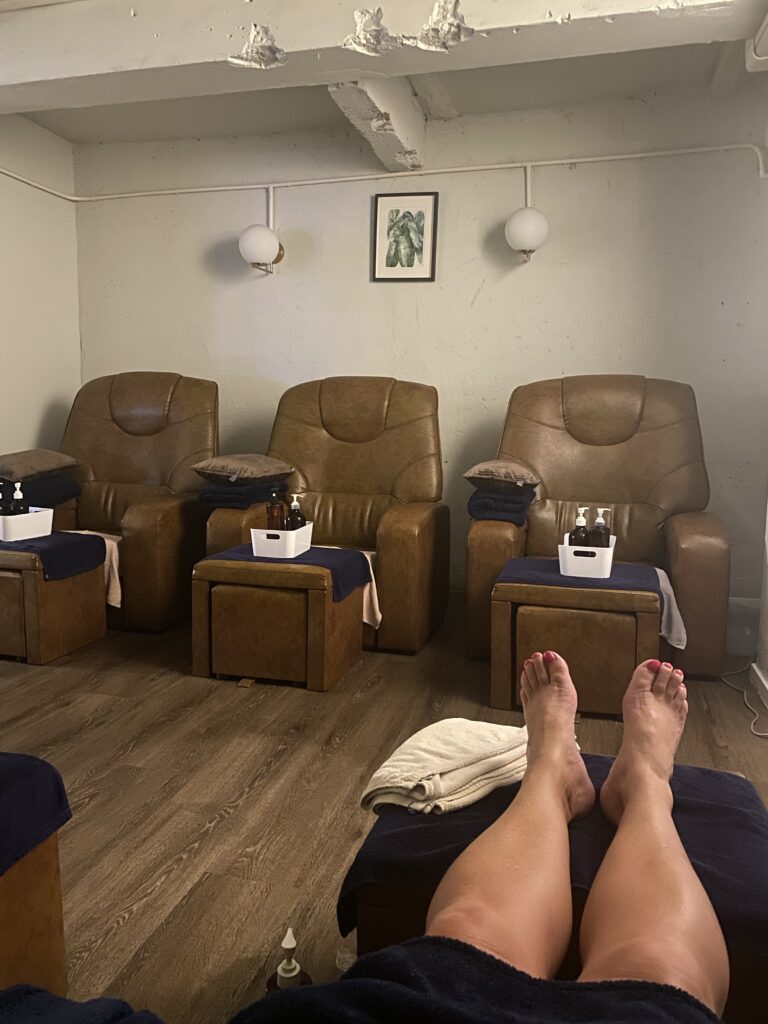
On the beaches, we preferred the outdoor full-body massages. But in the city, I changed my go-to service to a chair massage. It is a little bit cheaper and you get to relax in an oversized arm chair with all your clothes on while a nice lady rubs your feet and legs for about 40 minutes. Then they spend about 20 minutes massaging your arms, neck, back, shoulders, and head. Plus the air conditioning is blasting so you finally get to cool down!
Friends
The best part of this week was spending time with a friend I had met in Thailand back in 2009, Graeme.
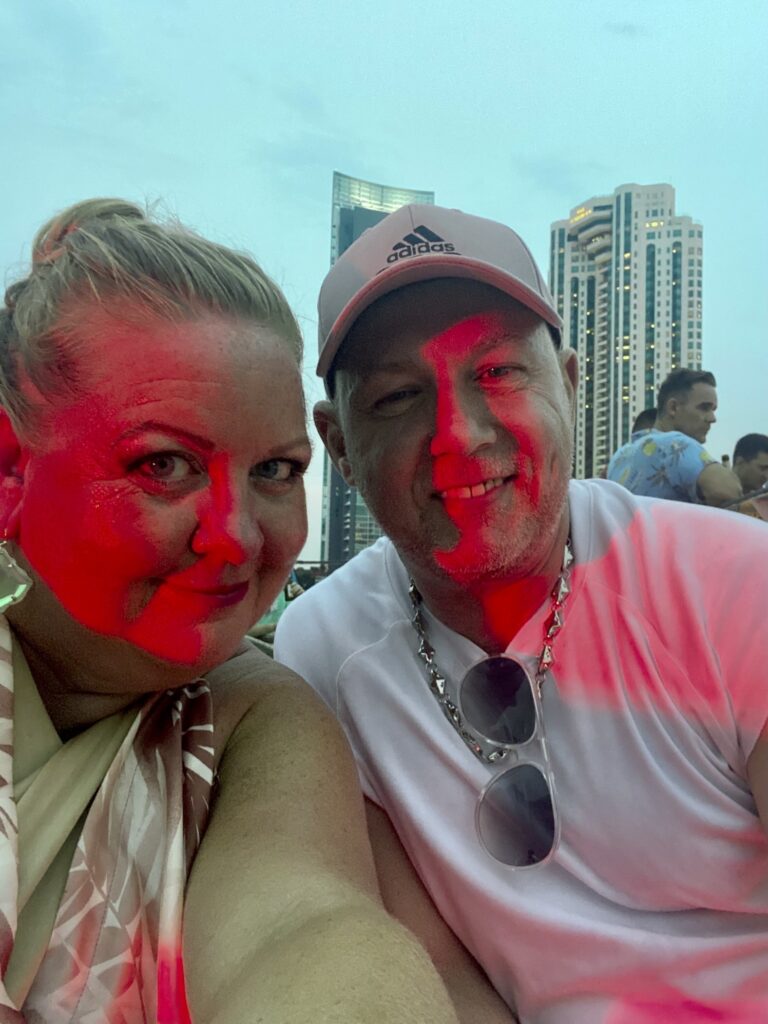
Graeme hails from Scotland, currently lives in Taiwan, and lived in Thailand for about a decade. We’ve kept in touch over the years so he and his partner spent some of their school break holiday in Bangkok (with us)!
Sukhumvit Soi 8
So we met up over drinks with Graeme and Grant their first evening in town. I picked a chill place on Sukhumvit Soi 8 (the 8th side street off Sukhumvit Road).
Soi 8 is a lively little street about 30 minutes on foot from our apartment. It was less hectic than Soi 11 but still had a fun vibe.
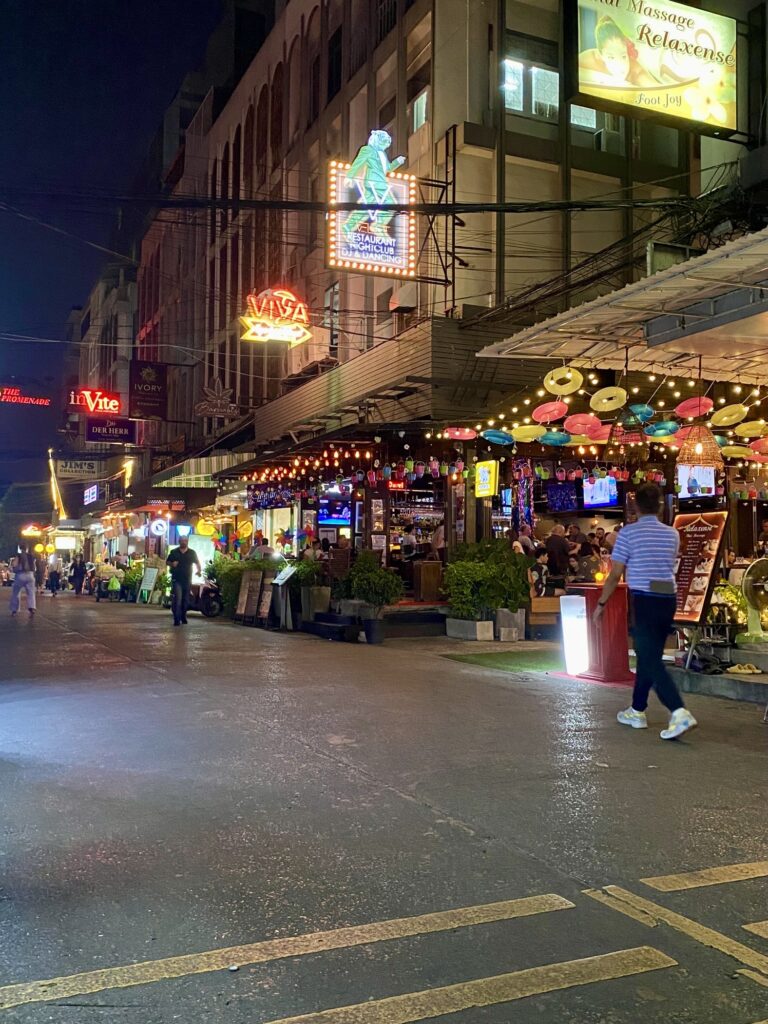
Brewski
The next night we met for drinks near our neighborhood. Graeme recommended a rooftop place that was less bougie than many of the other nearby rooftop venues.
The views from Brewski were incredible and we really enjoyed the company and evening scenery. The beer selection was outstanding, although priced typically for craft beer in Thailand ($10+ USD/pint).
I have no photos because it is difficult to take a good evening picture of Bangkok on a phone. So you’ll just have to take my word for it. There are an overwhelming amount of rooftop bars in Bangkok, with all types of vibes, styles, and price points. But it is a Bangkok essential experience to pick at least one as it is a beautiful way to enjoy the city.
Read about our third week in this post.
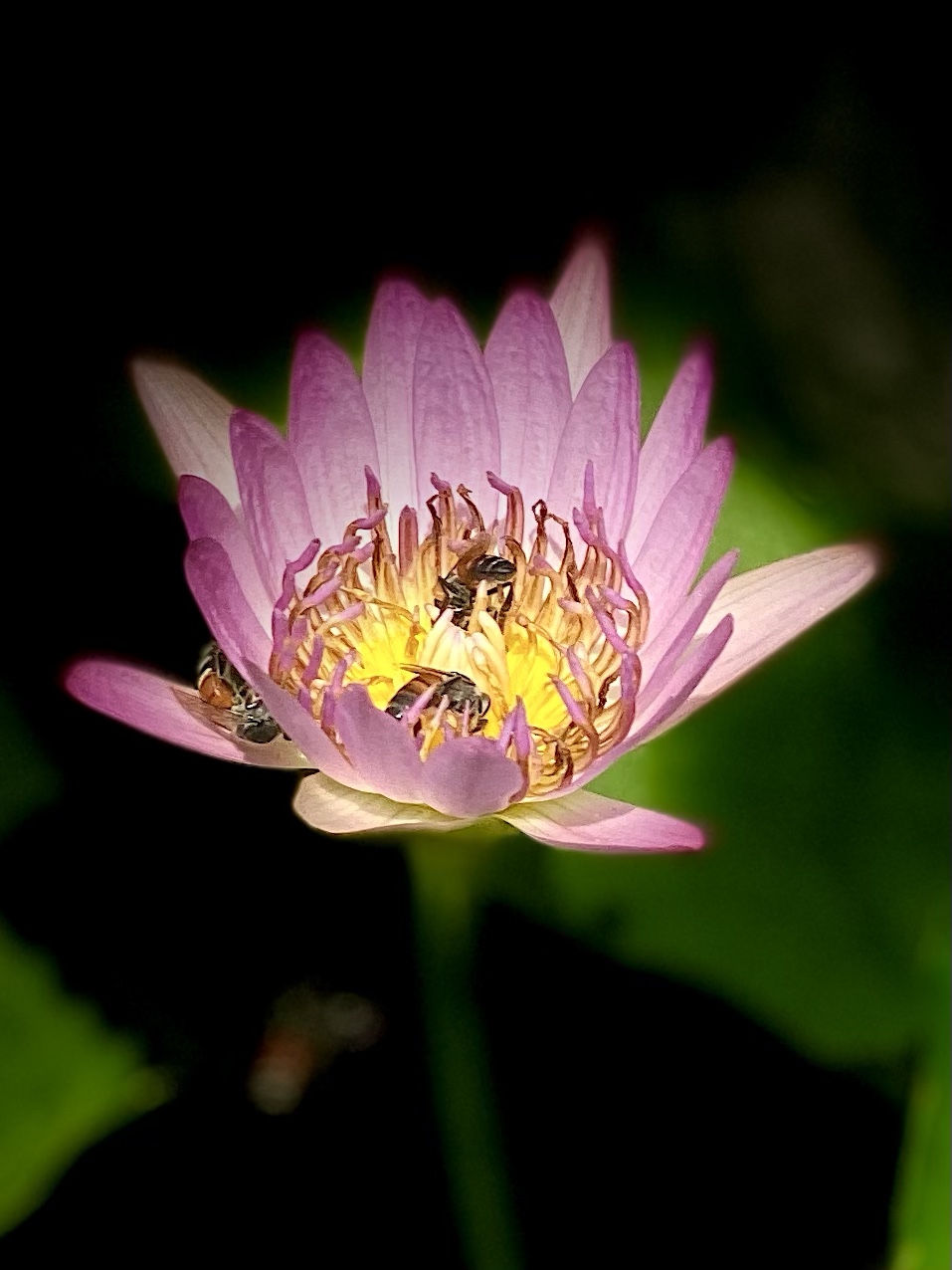
You’ve gotten us off to a good start for when we visit. We’re considering hiring a private guide to show us the hidden gems of BKK. Thoughts?
If you don’t have a lot of time and/or don’t want to put the effort into getting around the city, then a private guide/driver could be good. I think you also get a good individual perspective from a guide which I always liked. In week 3 we do some stuff on the other side of the river. With that in mind, hiring a boat for the day for sightseeing would be great! Stay tuned for that info…hopefully posted in the next day or 2.
Thanks for sharing this info.
Is it weird that I’m most impressed by the mural design on the side of the building at the start of the post more than anything else? I guess I just have a love for street art. I don’t know why, by I just kind of thought that China town’s popped up in places outside of Asia, and not in other Asian countries as well. Not sure why I thought that, I guess I just assumed a lot of the other Asian countries would have a longer history of established Chinese migration that they would have been completely integrated hundreds of years ago
That’s not weird. I thought it was awesome street art which is why it was at the top of the page!
I’ve been to “Chinatown” in at least a dozen large cities around the world (including places in US, Canada, NZ, Japan, Malaysia, Singapore, and Thailand). Your thoughts about a long history with migration and immigration is interesting. Based on what I’ve seen the older the community, the more established it is! This may be party due that the migration was from certain small parts of China, this immigrants wanted to hold on to their identities, culture, history, and customs as well. That’s what makes the Chinese and Peranakan people so interesting in places like Malaysia and Singapore.
The Chinese that emigrated to Thailand have definitely integrated plenty across Thailand. But it was neat to see that the community as it was then is still strong today and really helped Bangkok thrive over time.
All for the local private guide. A chance to experience the destination from a locals view point. Often find that more intriguing, more authentic. Lovely trip and photos, especially that very 1st mural
Thank you!